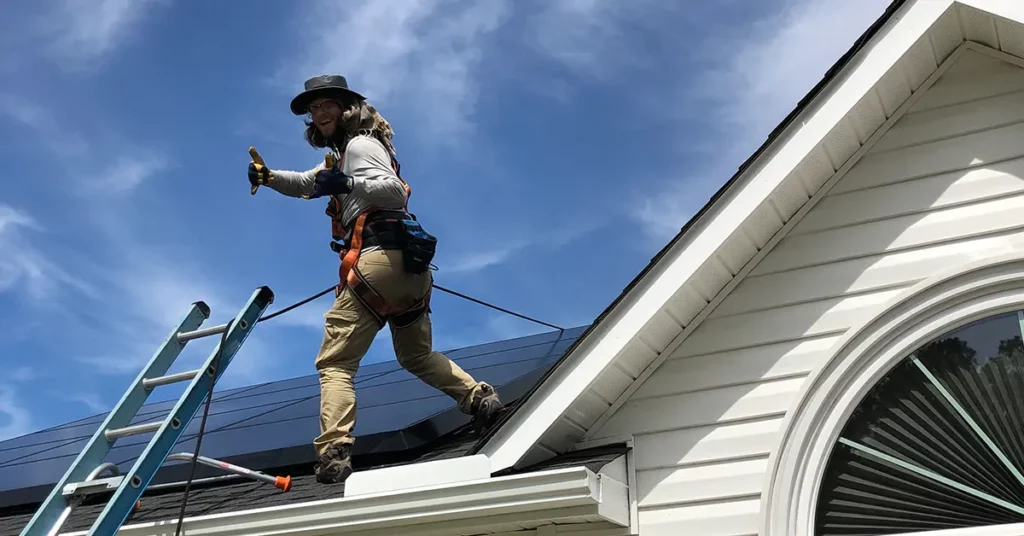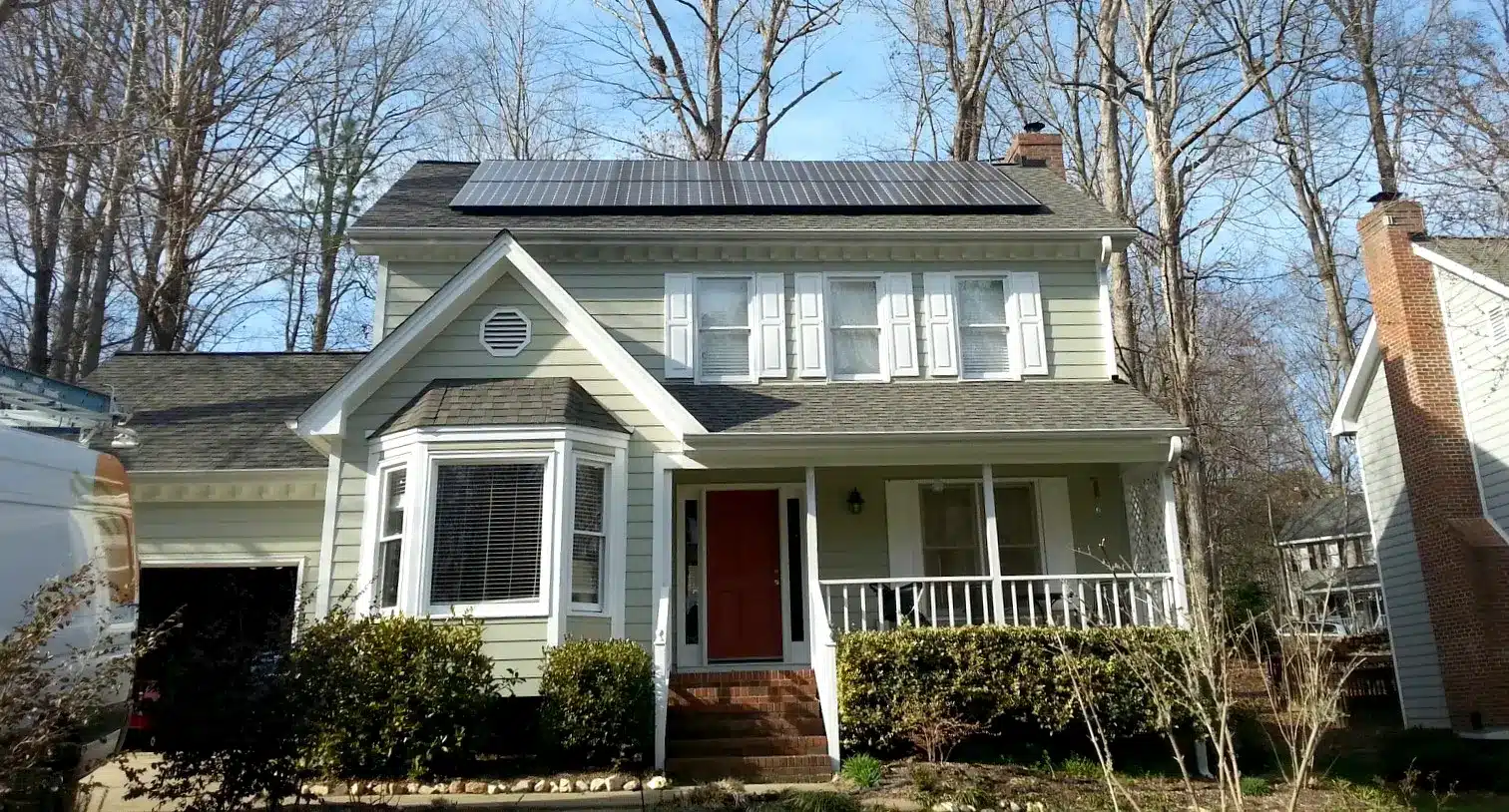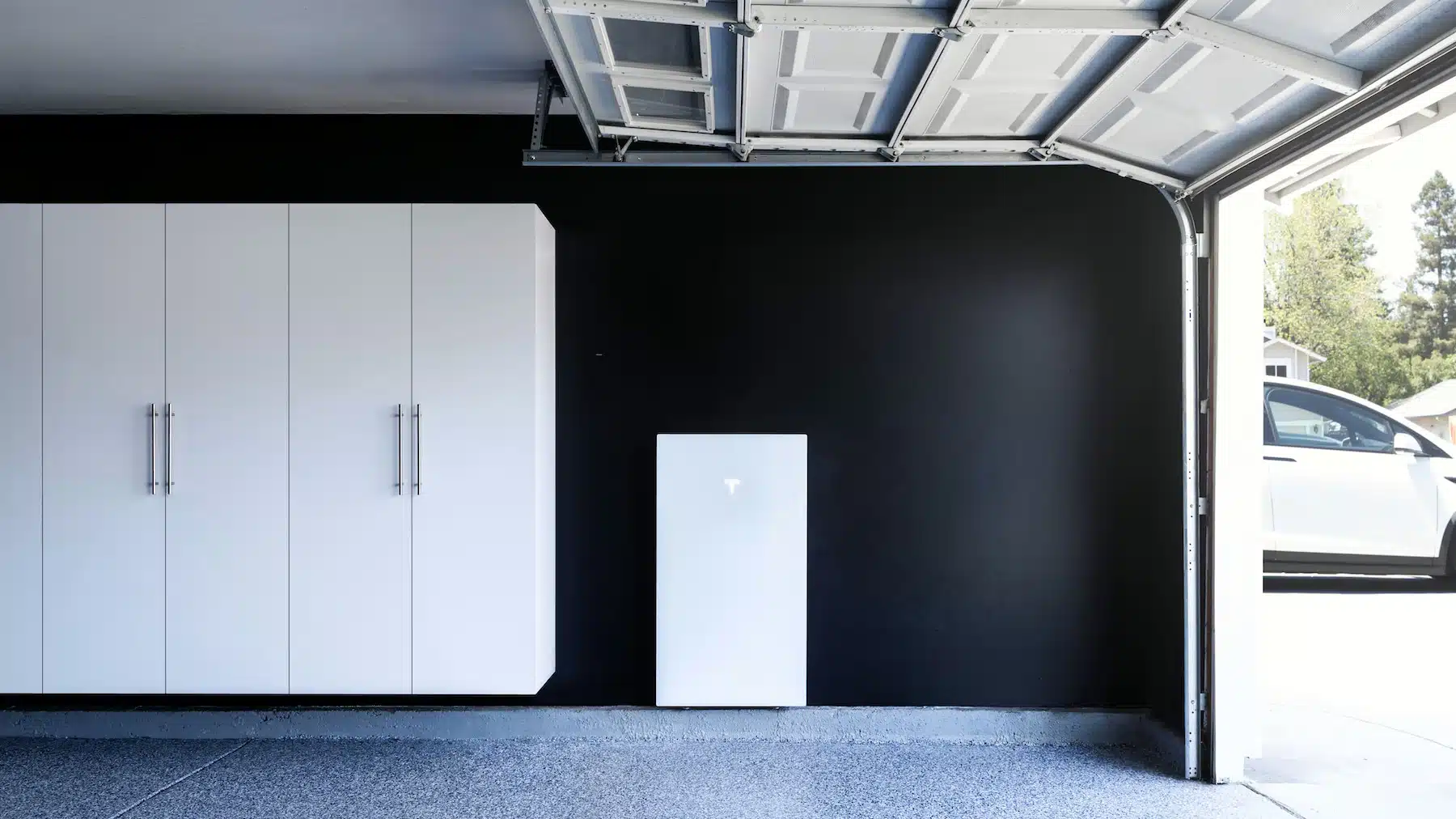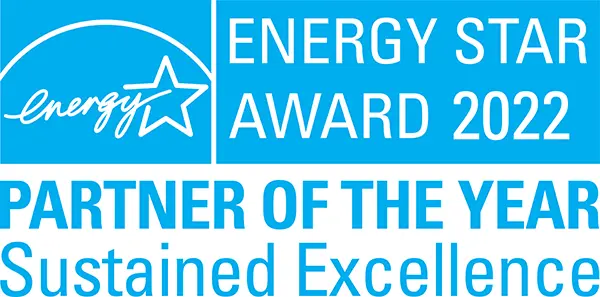What You'll Learn
Topic 01
A Growing Force in the Solar Industry
North Carolina – the land of the pines, the runway for the Wright Brothers’ first flight, home to the greatest college basketball rivalry, and the muse for James Taylor’s “Carolina in My Mind.”
With all these unique traits, North Carolina continues to set itself apart from the others. Since 2001, we’ve been proudly installing solar in North Carolina, and over the past decade, we’ve witnessed first hand our state blossoming into a leader in the solar energy industry. In fact, in 2022, North Carolina played a big support in reaching the US reaching a big milestone of energy generated from renewables topping coal and nuclear production.
We can see that North Carolina has made significant strides in the past few years, with enough solar generation to power 1,014,144 homes! This puts North Carolina at 4th in the nation (yep, you read that right!) in both total installed solar power generating capacity and actual annual solar generation.
Today, solar power accounts for 9% of NC’s electricity generation, showing its growing importance in our state’s energy mix. That growth has resulted in the creation of 6,978 jobs spread across 240 solar companies (lots of growth at Southern Energy included), boosting employment opportunities and our local economy… talk about some awesome news!
Big thanks to the Solar Energy Industries Association for providing that positive data.
Let’s dive into North Carolina’s solar industry updates for 2023!
Topic 02
North Carolina Solar Pricing & Incentives
How Much Does a Solar System Cost in 2023?
Our average system cost is roughly $26,000 for a 7.6kW solar system in North Carolina. After the Federal Solar Tax Credit (more on that below), this pricing comes out to around $18,000.

Although this is a rough average, solar system prices in 2022 ranged all the way from $10,000 up to $75,000 based on factors like site location, sun exposure, roof design, home energy use, energy offset goals, and more!
Calculate Your Solar Savings
See solar on your home! Our solar calculator uses your home address, the details you provide, and LIDAR satellite technology (with a dash of AI) to give you a ballpark estimate of how much you could save by going solar.
Update on the Federal Solar Investment Tax Credit (ITC)
In 2022, the Federal Solar ITC was restored through the signing of the Inflation Reduction Act (IRA), increasing the tax credit from 26% to 30% for homes and businesses that go solar. A new 30% Direct Pay option has was also introduced for tax-exempt nonprofits and government organizations to take advantage of. This is a huge win for solar across the country, North Carolina included!
Tesla Introduces a Powerwall Rebate
Tesla recently introduced a $500 Powerwall rebate for each Powerwall installed between June 15, 2023 and October 31, 2023. That’s right, each Powerwall, meaning this incentive stacks! The Powerwall must be installed by a Certified Powerwall Installer (we’ve got you covered) and registered through the Tesla Powerwall app to receive the rebate from Tesla.
The REAP Grant increased from 25% to 40% in 2023
The REAP (Rural Energy for America Program) Grant is a program by the U.S. Department of Agriculture. It provides funding to farmers and small businesses in rural areas who want to permanently reduce operating expenses by installing a solar energy system.
Since this incentive is a grant, once awarded, eligible farms and small businesses do not need to pay it back. The USDA REAP Grant can cover 40% of the cost of the solar energy system, and when combined with other incentives, rural farms and small businesses can see 79-90% off their total solar system cost.
It takes 5 minutes for us to determine if you’re eligible. So if you’re a farmer or rural small business, reach out today to see if you qualify!
New! IRA Energy Community Tax Credit Bonus
The Energy Community Tax Credit Bonus, as outlined in the Inflation Reduction Act (IRA), grants an additional benefit to commercial projects, facilities, and technologies situated in “Energy Communities”. This incentive is designed to support communities impacted by coal and power plant employment and closures. This bonus amounts to a max additional 10% Tax Credit for commercial solar projects placed in service in an Energy Community.

This interactive mapping tool from the U.S. Department of Energy represents the most up-to-date information on energy communities that may meet the eligibility criteria as defined in the Inflation Reduction Act.
New! IRA Low-Income Bonus Credits
The Inflation Reduction Act (IRA) also introduced a new Low-Income Bonus Credit for commercial projects located in a qualified low-income community and/or benefitting low-income residents. This Federal bonus credit ranges from 10-20% for commercial projects meeting one of several criteria. As of this post, there are still many unresolved questions, such as the DOE application process and clarity on specifics of eligibility. We’ll keep you updated as soon as that guidance is released from the IRS.
New! IRA Domestic Content Bonus Credits
There is an additional Federal incentive in the Inflation Reduction Act (IRA) to promote domestically made solar materials. This credit is worth another 10% off of system costs for commercial solar projects using products that meet a set of criteria including 100% US-made steel and iron, and solar panels that are 40% produced in the US. As of this writing, we have yet to find a manufacturer that meets the requirements outlined, however, we anticipate by the end of 2024 there will be options on the market. Again, we’ll keep you updated!
Topic 03
New Solar Tech and Products on the Market
Battery Storage As Popular as Ever!
With energy rate hikes and power outages from weather disruptions continuing to make the rounds in 2023, battery storage has been an increasingly popular option for homeowners to maintain control over their energy. And now, with net metering updates on the horizon (more on that below), battery storage will be even more important for maximizing the value of the solar you produce.
In fact, more than half of our solar system installations include a Tesla Powerwall or other battery storage option. As we prepare for hurricane season later this year, we’ve put together some resources on how to avoid grid outages with a battery storage system.
The SPAN Panel Makes Its Debut
Created by ex-Tesla developers, the SPAN Panel is a relatively new product that expands control over your home energy with the touch of an app. How does it work? SPAN is a smart electrical panel that helps you achieve your energy upgrade goals while giving you better options for managing your battery backup.
This product is ideal for homeowners with batteries who want full control and oversight of their home energy usage. It’s a great product for our customers who love ‘em some cutting edge technology. We’re excited to add this product to our service offerings in 2023 as a Certified SPAN Panel installer.
Tesla Solar Shingles Not Very Hot (Still)
Our last blog on Tesla’s Solar Shingles in North Carolina was in 2021 when they were hot and ready for pre-order. As a Tesla Certified Installer, we recommended waiting on this new technology due to the pricing, availability, and complexity of the product.

As of 2023, we still aren’t seeing widespread adoption of solar shingles in North Carolina, Tesla branded or otherwise. After a hands on review of various solar shingle products, we are still choosing to not carry this product for those same reasons.
The Powerwall + (Plus)
Powerwall+ (aka Powerwall Plus) is a Tesla inverter and a Tesla Powerwall 2 essentially bundled together. The technology takes a simplified approach with fewer components and better battery integration for some efficiency gains.
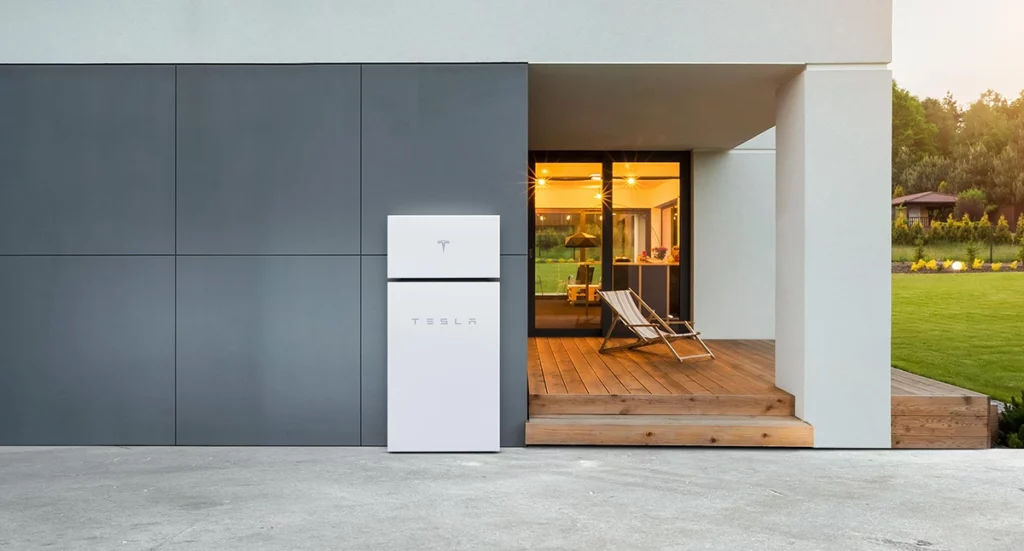
We’re a fan of Tesla’s Powerwall Plus for homes for homes that have little to no shading, like all of the new construction neighborhoods popping up around town.
Powerwall 3
Yes, we see all the speculatory headlines as well. 🧐 As a Certified Tesla Powerwall Installer, we haven’t received word of any official Powerwall 3 product launches from HQ, but we’ll let you know once we get any sense of confirmation from the higher-ups! Until then, we can confirm that Tesla will continue to upgrade their existing Powerwall 2 product through firmware updates.
Top 17 Powerwall Questions Answered
Solar and EVs
Charging your electric vehicle (EV) on sunshine is becoming an increasingly popular option, and something more of our customers ask us to factor in when designing their solar system.
With the solar technology we have right now, an EV can charge directly from solar energy if it’s plugged in while the solar panels are active. And if you have a battery system, when the sun goes down, you can continue charging from the battery’s stored solar energy to get even more out of your solar investment. Our Amicus Solar Cooperative friends over at Ipsun Solar have a great way to think of this:
“The cost of gasoline in 1993 was $1.11/gallon. Today the average cost is nearly $4/gallon. Knowing that, if you could have purchased 30 years of gasoline in 1993, would you have done it? The same concept applies to solar. If you could lock in today’s utility rates for 30 years, would you do it? The difference between these two examples is that in the first, you can’t actually store 30 years of gasoline in your basement, but you can surely store 30 years of electricity on your rooftop.”
That’s pretty neat – your EV charging right from the power of the sun — just like plants making food from sunshine!
V2H and V2G Charging
Headlines of new EV makers entering the market and others setting up shop in our own backyard in North Carolina are making the rounds. Our download of solar, batteries, and EVs in 2023: New technologies are in development that will allow for DC to DC EV charging which will benefit efficiency. Other technologies, like vehicle-to-home (V2H) charging that links the electric car’s battery to your home’s electrical system to use as backup power, and vehicle-to-grid (V2G) charging that makes the most of time-of-use utility costs, are still being developed.
Using your EV’s battery as a home battery solution won’t be ready for widespread adoption until North Carolina public utilities can determine how V2H and V2G will impact the grid. Duke Energy and Ford Motor Company are studying the potential impact of V2G to power the grid with the new F-150 Lightning electric truck.
Topic 04
Changes to Solar in North Carolina
Duke Energy Changes Net Metering Structure
Big news dropped this year for Duke Energy customers in North Carolina. The utility announced changes to its solar net metering program. Solar credits will be valued differently starting October 1, 2023. Anyone who goes solar BEFORE October 1 will be locked-into the current system through 2027 and have more options going forward as North Carolina transitions to a new era for solar.
Rising Utility Rates Makes Solar Even More Appealing
Duke Energy proposed a new multi-year rate increase starting in October of 2023. By the end of 2025, the average customer will be paying $25.55 more each month, which is $306.60 more each year on electricity. As utility costs continue to increase, your solar system’s value also increases from an investment perspective. With a solar system, you essentially lock in a stable energy price (your turn-key system price), shielding you from rising utility costs for the next 30 years.
Bye-Bye Pink Energy
Pink Energy (aka Powerhome Solar) closed shop for good at the end of 2022. This left a big bruise on the solar industry in several states, including North Carolina, with thousands of homeowners left with faulty solar systems and attorney generals getting involved. There are so many takeaways to be learned, especially when vetting a solar installer.

Solar Maintenance & Repair
Solar system not shining? We provide solar system repair, troubleshooting, and maintenance to get your solar system producing clean, renewable energy again. You’ll be in good hands with Sam (pictured) diagnosing your system!
Topic 05
New Resources on Solar and Battery Storage in North Carolina
Your Comprehensive Guide to Solar Energy
Never stop learning! Our Solar 101 guide aims to educate and inspire individuals about the vast potential and benefits of solar energy in North Carolina.
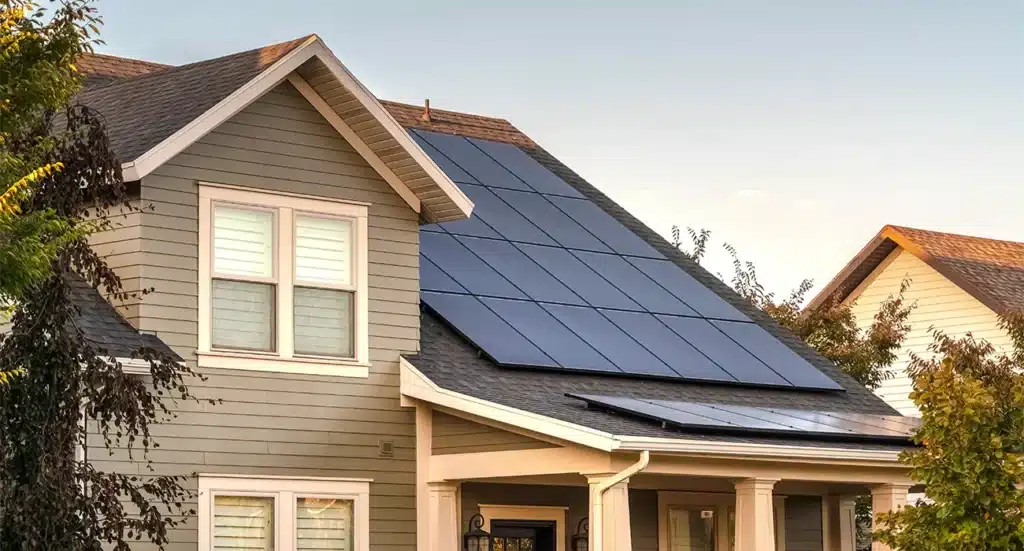
From understanding the fundamentals of solar technology, to exploring the design and how to know if it’s right for your home, this guide seeks to provide an in-depth insight into this exciting technology. Whether you’re a student, educator, or simply an interested reader, step into the world of solar energy and discover how you can contribute to a brighter and more sustainable future.
Powerwall or PWRCell? Guide to Battery Storage in NC
Whether you’re trying to boost your solar savings, maintain power during grid outages, or increase your energy independence, consider this your go-to resource for home battery storage solutions in North Carolina.

We’ve done the research, asked the experts, and put together answers to the top questions people looking into battery storage ask. Still have questions? Schedule a meeting to find out if Powerwall or PWRcell is better for your home.
What's Next?
Start Your Solar Journey
Quite a bit has happened in the past year. Our Co-founder, Maria Kingery, doesn’t call it the solar coaster for nothing. Despite the ups and downs, solar in North Carolina is still going in one direction overall – up! So, here’s to North Carolina and the solar industry for making the most of each sunrise and making an impact on our world.
Ready to kick off your solar journey? Reach out for a free solar assessment or schedule a meeting to have your questions answered by our solar educators, Dave, Sam, and Sophie.
Ready to Get Started?
Schedule a free assessment to learn more about solar power & battery storage for your home.
About Us
North Carolina’s solar power and building performance expert. Founded in 2001, we’ve worked for 20+ years to improve the way people make and use energy.
© 2023 Southern Energy Management, Inc.

